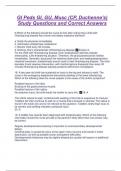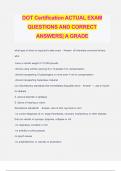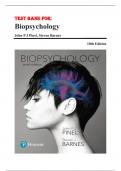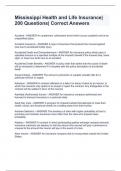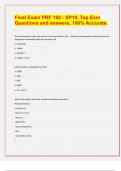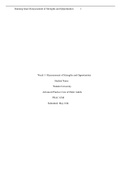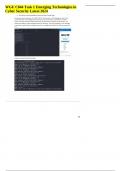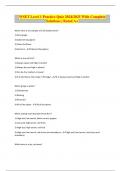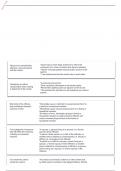Exam (elaborations)
GI Peds GI, GU, Musc (CP, Duchenne's) Study Questions and Correct Answers
- Course
- Institution
6.Which of the following should the nurse do first after noting that a child with Hirschsprung disease has a fever and watery explosive diarrhea? a. Notify the physician immediately b. Administer antidiarrheal medications c. Monitor child every 30 minutes d. Nothing, this is characteristic ofHirsc...
[Show more]
